About
Sir Seewoosagur Ramgoolam 125th Birth Anniversary
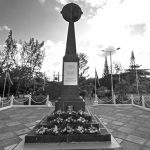
Memory as Reconciliation
Fig 8: Monument aux Esclaves at Pointe Canon Mahebourg. (Source: Government Information Service (GIS)/PMO) Sir Seewoosagur Ramgoolam at the 150th Anniversary of Abolition: Memory as Reconciliation In February 1985, to mark the 150th anniversary of the abolition of slavery, Sir Seewoosagur Ramgoolam, then Governor General, unveiled the Monument aux Esclaves at Pointe Canon, Mahebourg. The memorial was erected to honour the resilience of enslaved people and to commemorate their struggle for freedom. For Sir Seewoosagur Ramgoolam, it was more than a monument. It was a declaration that Mauritius must face its past honestly in order to build reconciliation and unity
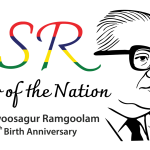
Mauritius at Independence: Fragile Beginnings, Enduring Legacy
In 1968, the small island of Mauritius entered the world stage as a newly independent country. Its prospects did not inspire confidence. With no natural resources, a mono-crop economy reliant almost entirely on sugar, and a population divided along ethnic and religious lines, many observers predicted failure. Commentators dismissed Mauritius as destined to become “another failed postcolonial African state.” Yet history took a different course. Mauritius has since become one of Africa’s most stable democracies and one of its most diversified economies. The island today enjoys high levels of literacy, life expectancy, and social cohesion. At the centre of this
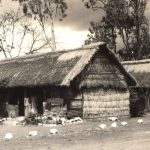
Poverty and loss did not define him; they prepared him
Fig 2: Belle Rive Estate Camp where Sir Seewoosagur Ramgoolam was born on 18 September 1900 (Source: Carnegie Library of Curepipe (CLC)/ Courtesy of Satyendra Peerthum) Humble Beginnings Seewoosagur Ramgoolam was born in Belle Rive in 1900. He was the son of parents descended from indentured labourers. His childhood was marked by hardship. At the age of five, he lost his mother, at seven, his father, and at twelve, he suffered an accident in a cowshed that cost him his left eye. Despite these challenges, he was determined to learn, to overcome poverty, and to emerge from being a poor,
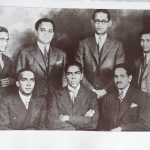
A Doctor with Ideas
Fig 3: Young Seewoosagur Ramgoolam with his Mauritian university friends in London in 1932 (Source: GIS) In 1921, Seewoosagur Ramgoolam travelled to London to study medicine at University College London. While training as a physician, he also attended lectures at the London School of Economics, where he encountered debates about democracy, freedom, and economic development. He was active among the Mauritian and Indian students in London and began his long writing career there. During a visit to Paris, he befriended the French writers André Gide and André Malraux. Gide’s journey from sympathy for communism to rejection of it left a
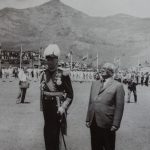
We Cannot Build a Nation on Fear
Fig 4 Raising of the Mauritian flag at Champs de Mars at high noon on 12 March 1968 as power was passed from Governor Sir John Shaw Rennie to Sir Seewoosagur Ramgoolam, the son of an Indian Indentured Labourer (Source: GIS) Independence and Nation-Building When Sir Seewoosagur Ramgoolam returned to Mauritius, he entered politics in 1940 at a time of growing demands for greater voting rights, workers’ rights, a new constitution, and greater autonomy for the island. As the independence movement gathered momentum, Sir Seewoosagur Ramgoolam recognised that political sovereignty alone was insufficient. The island’s strength lay in its people,
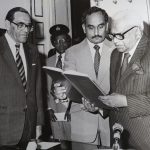
Guardian of Democracy
Fig 5 Sir Seewoosagur Ramgoolam being sworn in as the Governor-General in December 1983 at State House, Le Reduit (Source: GIS) On 12 March 1968, Mauritius gained independence under his leadership. Against expectations of violence and division, independence was achieved in peace. Sir Seewoosagur Ramgoolam’s cabinets reflected the island’s diversity, and his inclusive leadership prevented division at a critical moment, demonstrating that negotiated representation was stronger than imposed dominance. He famously warned, “We cannot build a nation on fear and domination.” This conviction guided him throughout his political career and gave Mauritius a democratic culture rare among postcolonial African states.
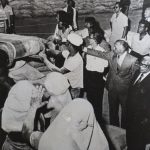
Economic Transformation: From Sugar to Services
Fig 6. Sir Seewoosagur Ramgoolam inaugurating the Bulk Sugar Terminal in Port Louis harbor in 1980, which served as a major lifeline for the country’s economy. (Source: GIS) At independence in 1968, Mauritius depended almost entirely on sugar exports, with over 90% of its foreign earnings tied to one crop. Sir Seewoosagur Ramgoolam knew this was unsustainable. Working with experts from the IMF and World Bank, he launched policies to diversify the economy while preserving social protections. The creation of the Export Processing Zone in the 1970s attracted foreign investment in textiles and manufacturing. Over time, tourism, financial services, and
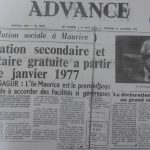
Investing in People: Education and Health
Fig 7: Sir Seewoosagur Ramgoolam announcing the implementation of free secondary school and university education starting in January 1977. (Source: National Library (NL) For Sir Seewoosagur Ramgoolam, independence meant more than political sovereignty. It meant improving the lives of ordinary people. He expanded access to education by making primary and secondary schooling free of charge. Literacy rates rose rapidly, producing a skilled workforce ready to support economic growth. At the same time, he invested in healthcare. Hospitals and clinics were built across the island, and access to medical care improved dramatically. Anecdotes from his prime ministership reveal his priorities: when
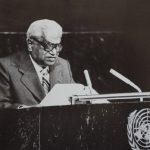
A Global Advocate to Human Dignity
Fig 9: Sir Seewoosagur Ramgoolam addressing the United Nations General Assembly, after receiving the United Nations Human Rights Prize in 1973 in New York City, USA. (Source: GIS) Sir Seewoosagur Ramgoolam’s defence of human dignity extended beyond Mauritius. On 10 December 1973, during a special session of the United Nations General Assembly, he received the UN Prize for outstanding achievements in the field of human rights, commemorating the 25th anniversary of the Universal Declaration. The award placed him in the company of global figures who had advanced liberty and justice. His belief in freedom was unwavering. In an interview with
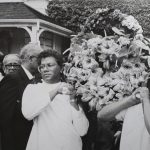
A nation mourned, a legacy endures
Fig 10. The funeral procession of Sir Seewoosagur Ramgoolam leaving State House at Le Reduit in December 1985, proceeding to Sir Seewoosagur Ramgoolam Gardens for the cremation ceremony. (Source: GIS) Sir Seewoosagur Ramgoolam died on 15 December 1985 at the age of eighty-five. Though no longer in power, he was revered as the Father of the Nation. His funeral drew tens of thousands of mourners, and he was laid to rest with full state honours. His life mirrored that of his country: from marginalisation to mastery, from vulnerability to resilience. He left behind democratic institutions, a diversified economy, and a
